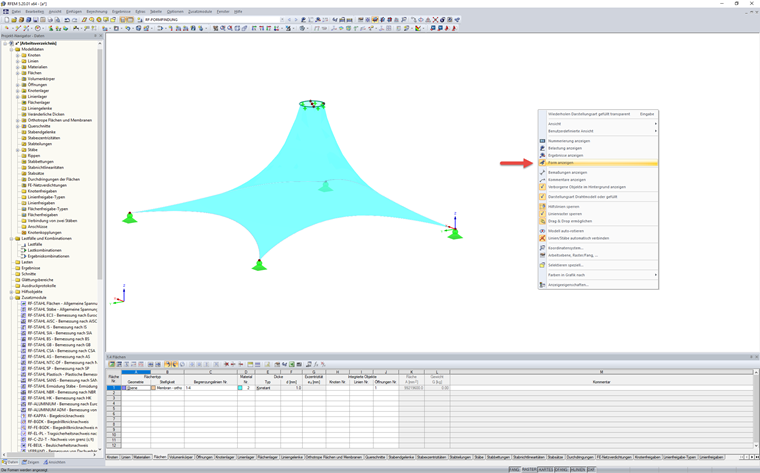By activating the RF‑FORM‑FINDING add-on module, a high-quality form-finding process according to the URS method is determined for each element with form-finding properties before the actual structural analysis. After the calculation, this process results in an optimum equilibrium shape that corresponds almost exactly to the preset form-finding parameters (prestress, sag, and so on).
Since this URS method requires an iterative calculation to display the results, the program provides an interactive graphic mode based on the force density method for pure modeling. This mode displays the resulting element shape on the basis of the defined form-finding properties when entering the elements.
To avoid possible initial complications due to incompletely defined models, it is possible to switch the mode on and off at any time using the "Show Preliminary Form-Finding" option in the shortcut menu.
During the determination, the graphic mode considers all force-related form-finding entries on the member and surface elements. A stable boundary condition is assumed in the respective direction for all relevant nodes with a connected element or support definition. Furthermore, the integrated openings in surfaces are considered for the optimized display of tent points.
Generally, this interactive form-finding is only intended for graphical display of elements with imposed loads and it works independently of the URS form-finding, which is always carried out before the pure structural analysis. However, the surface meshing is based on the currently displayed shape and can thus be influenced by activating the interactive form-finding.

